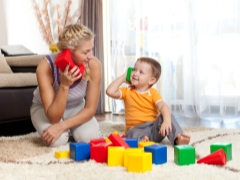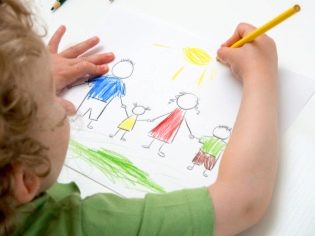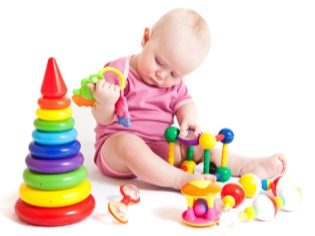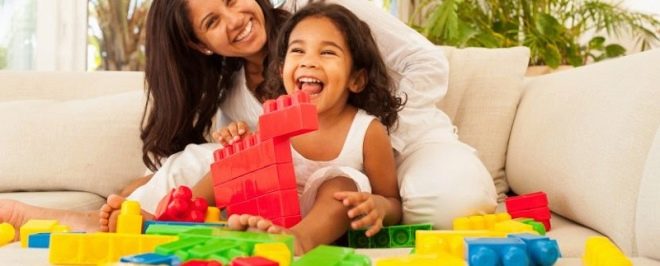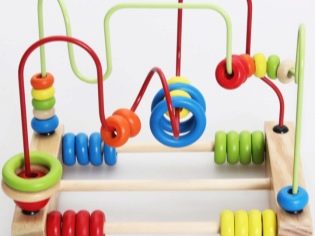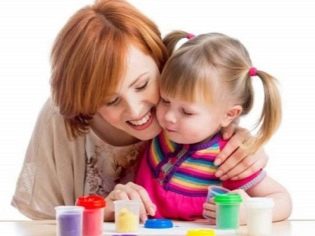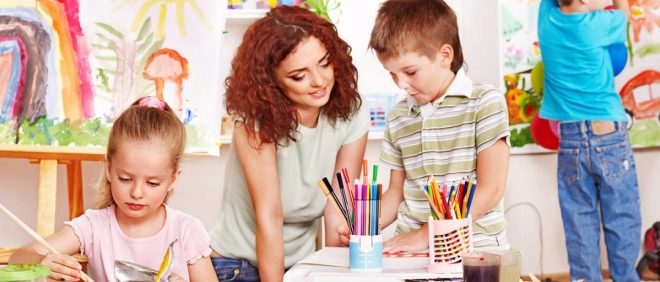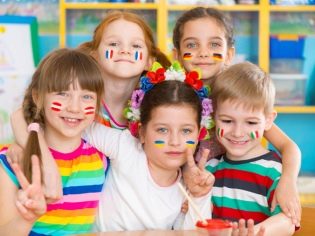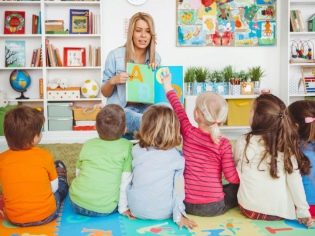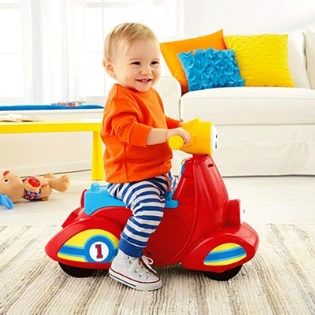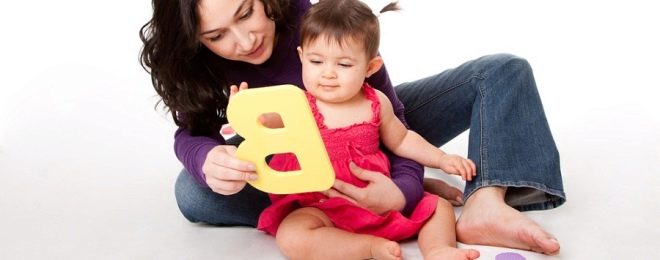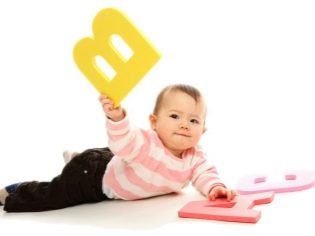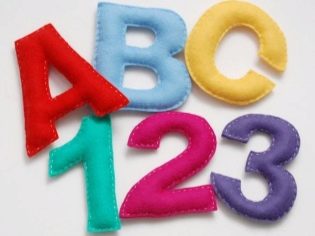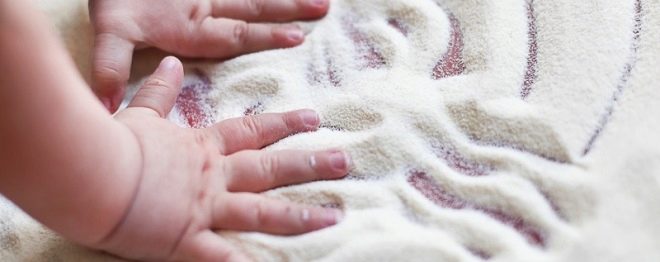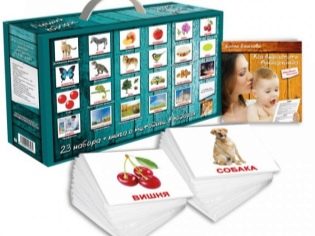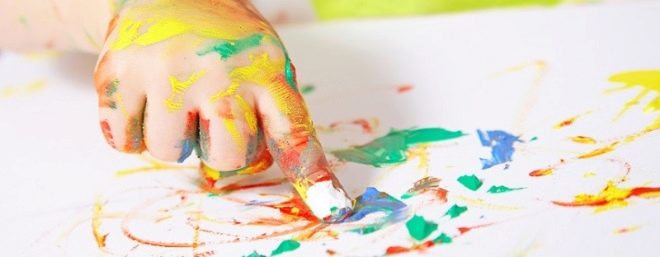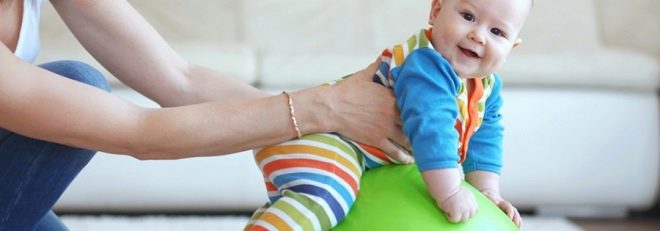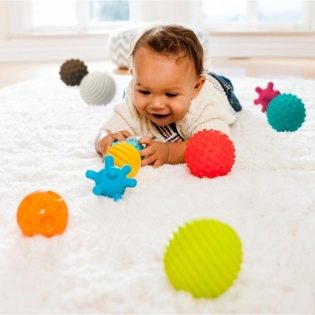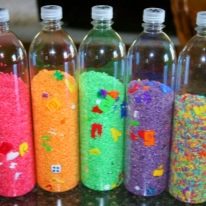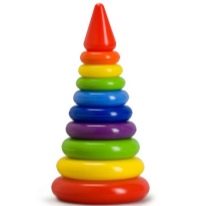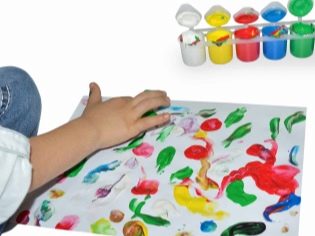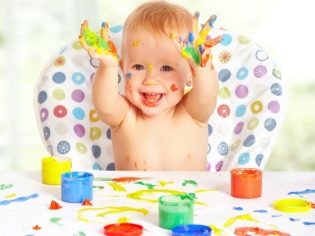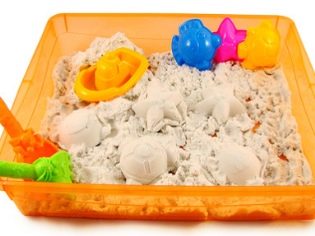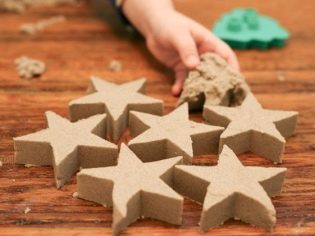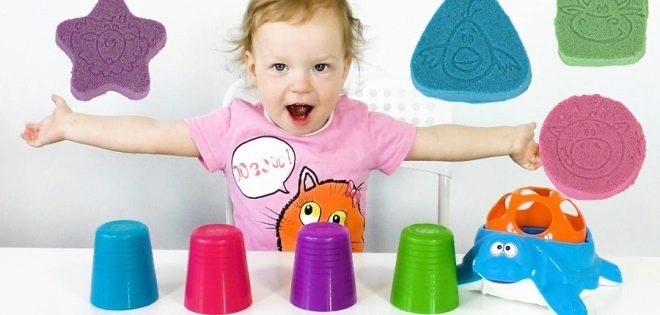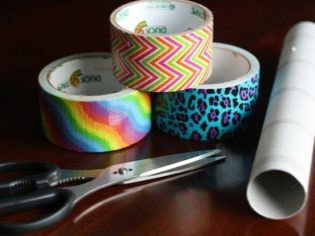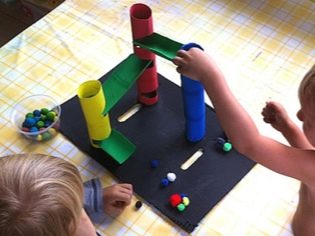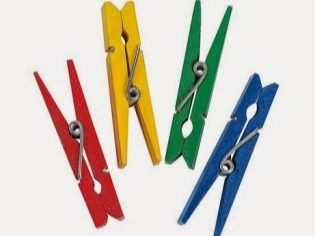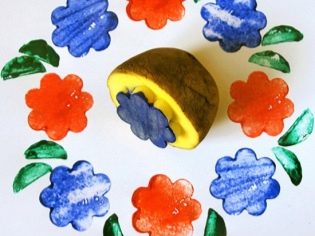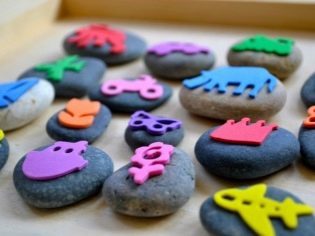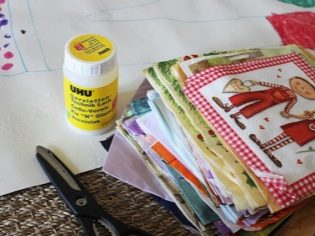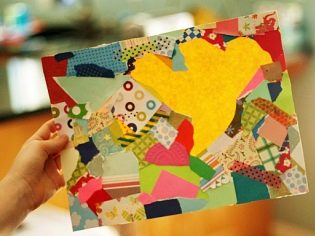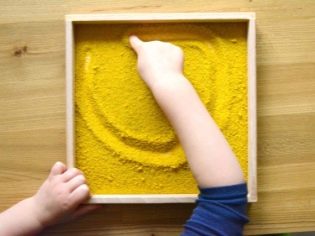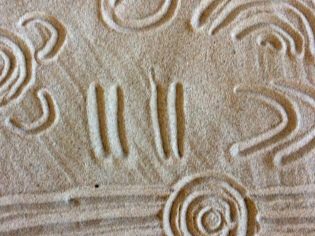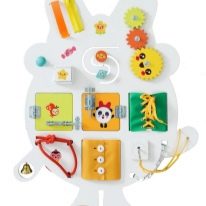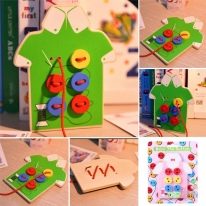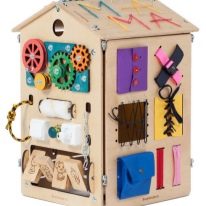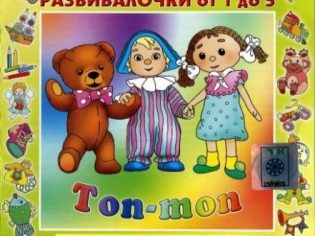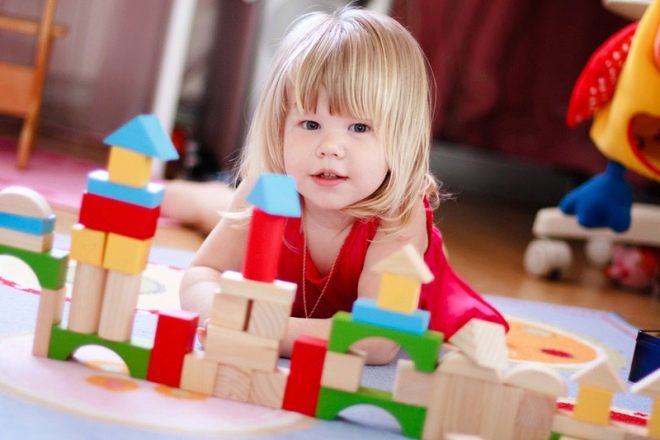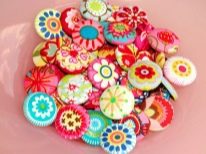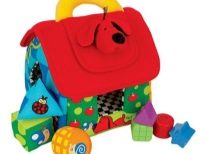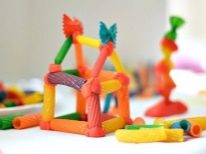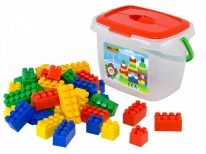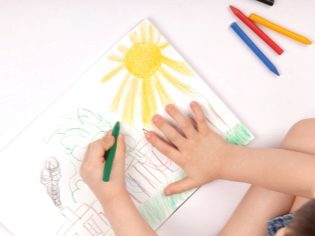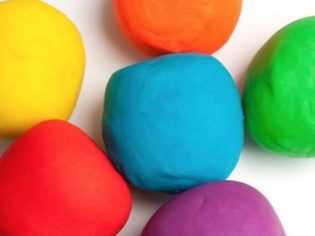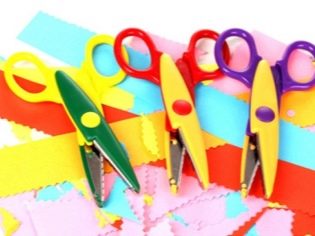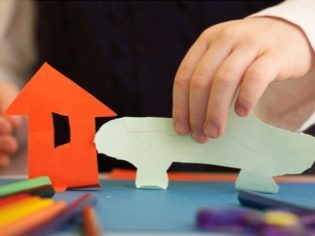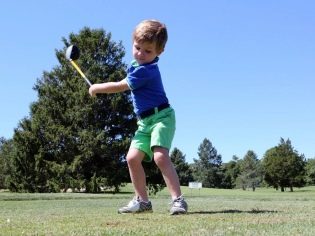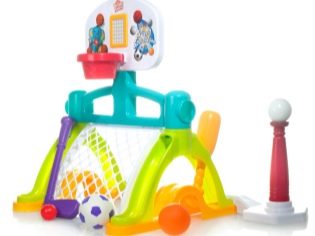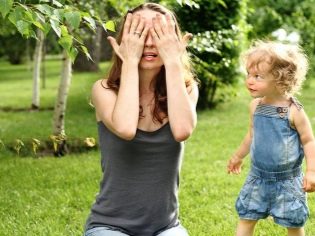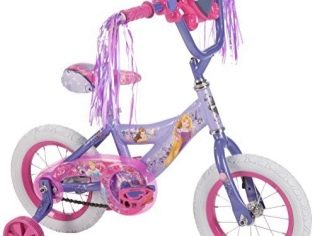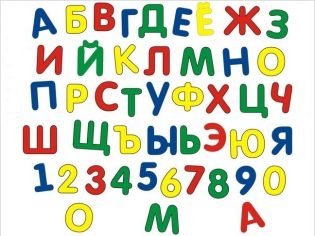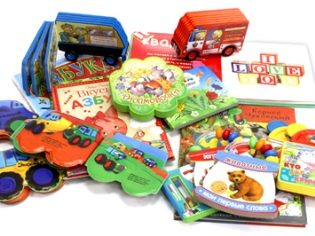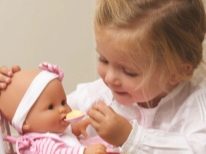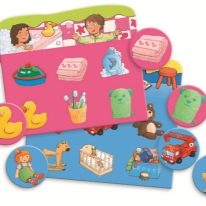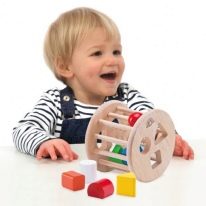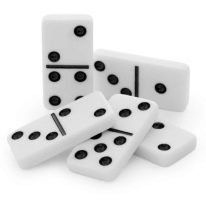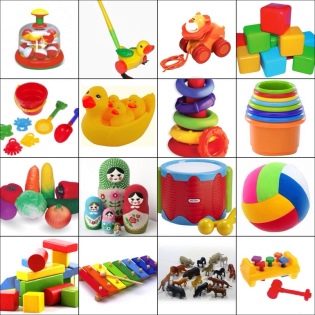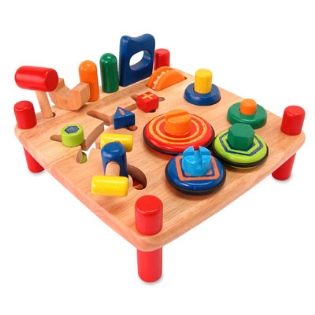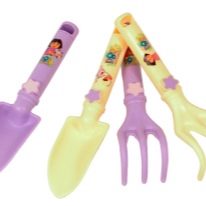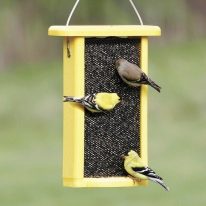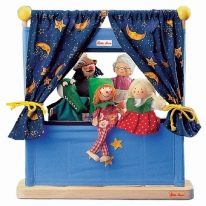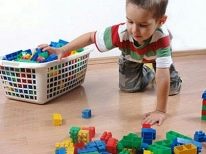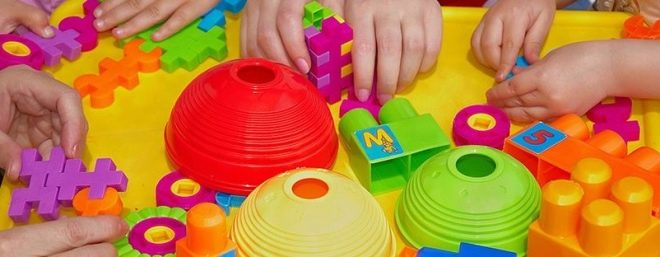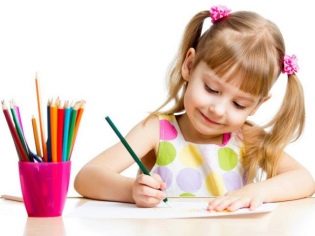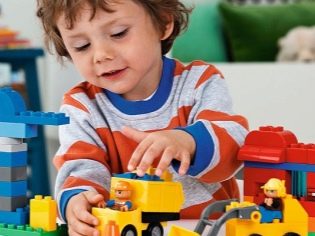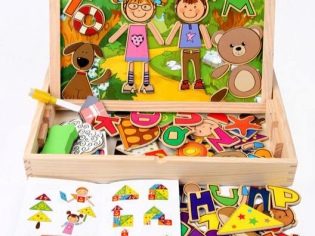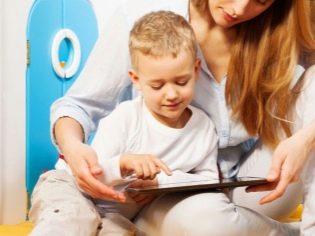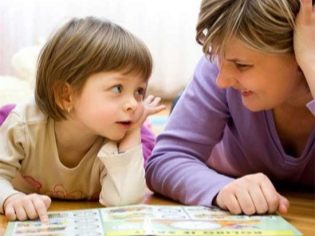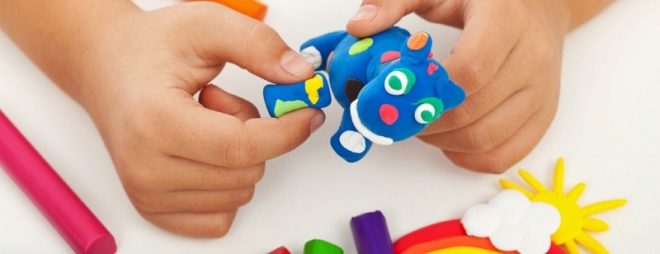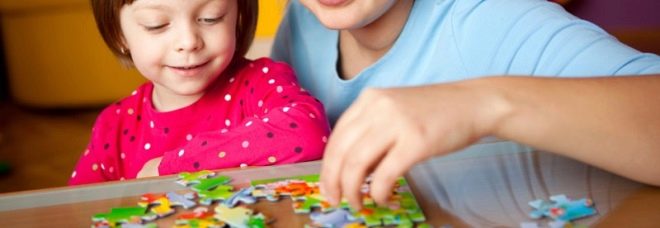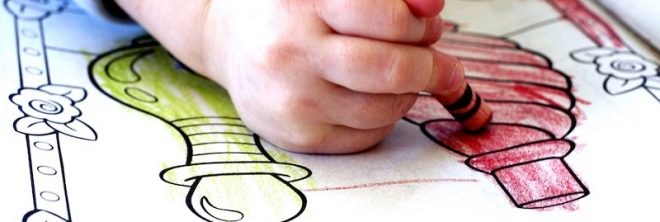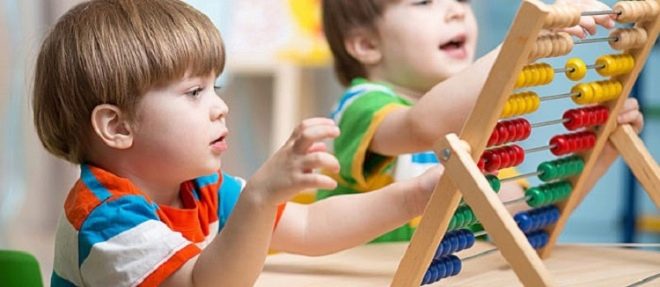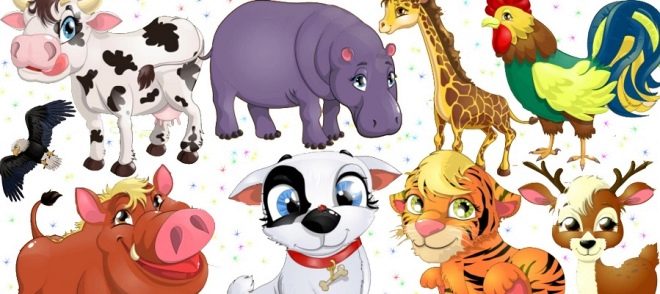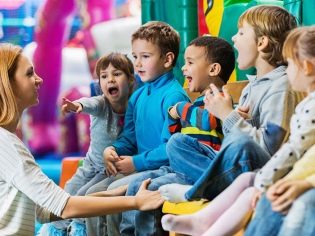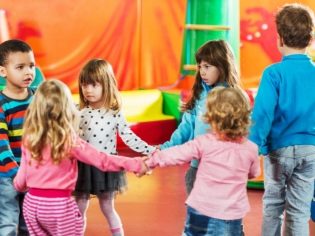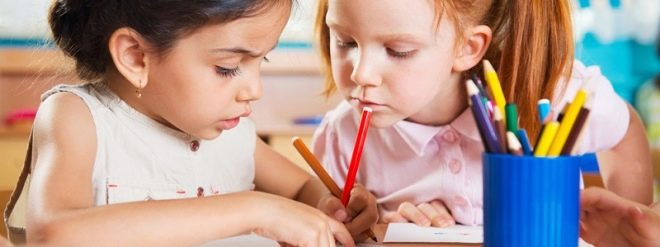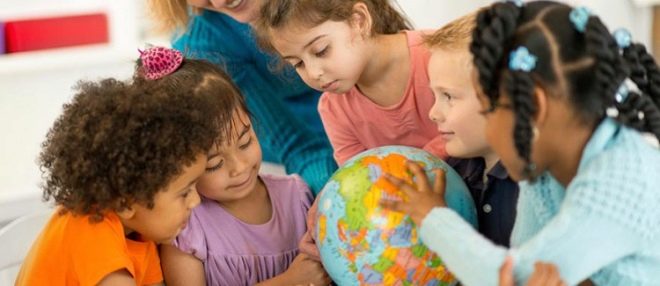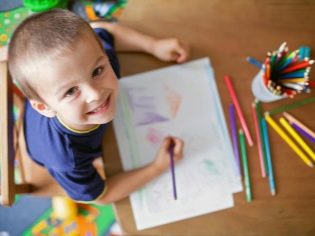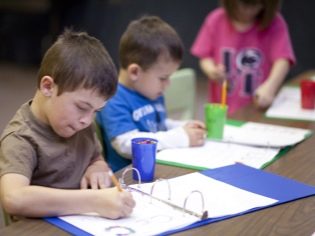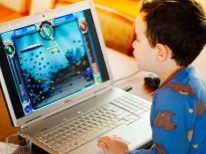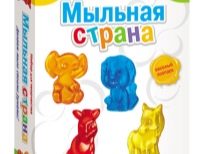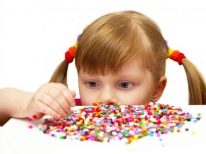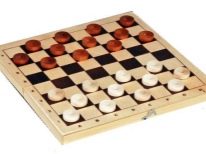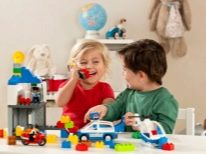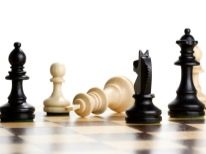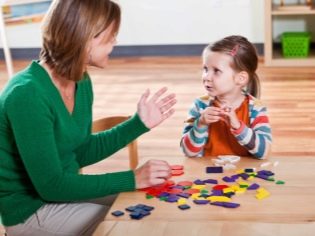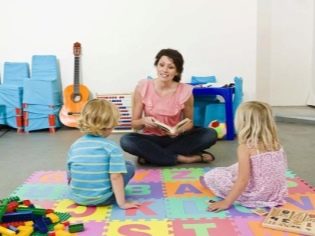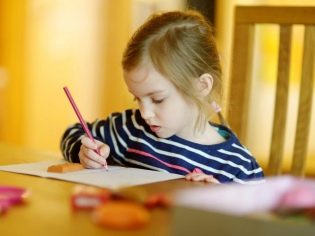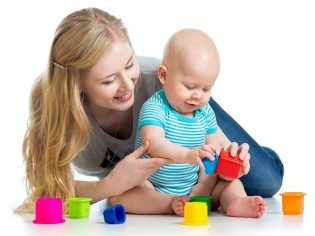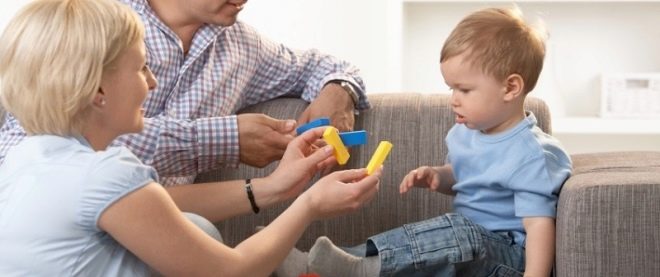Educational activities for children
Educational activities for children are not only useful, but also very interesting for them. As a rule, they are held in the form of a game, in which the guys join with great pleasure. For parents, this is not only joint spending time with the child, but also helping him develop and learn new things.
The importance of developing activities
Practically all parents know how important it is to develop your baby from an early age. After all, its proper development is a successful start in later life.
In this difficult matter you should not hope only for a kindergarten, adults should be engaged with the baby at home.
Moms and dads try to do everything so that their child grows up as a smart, successful and goal-oriented person who knows how to achieve their goals. And they are doing very correctly, because the greatest ability to absorb a new brain is in the period from the moment of birth to 6 years. At this age, the baby will be able to remember the greatest amount of new information for him.
Houses
The benefits of working with a child at home are many:
- The schedule can be adjusted to your baby, focusing on the time in which he is able to practice. You can easily take into account the temperament, interests, mode of the day of your child.
- Being engaged with the baby at home, you can use some of your own rhymes, chants or other rituals that will emotionally tune the child to class.
- As a rule, at home, everything you need to practice is always at hand, because they need not only paper and pencils. You can use toys and furniture, make benefits from scrap materials. Your baby will be able to tell you how to use what is most interesting to him.
- Classes with a tiny home - this is a budget option. You do not have to spend a lot of money on visiting development centers.
- The time you spend with your child together is priceless. All his successes, new knowledge and skills - this will be the result of your hard work.
All of these benefits of doing at home are undoubtedly very important. However, educational activities with children are also held in kindergarten.
In the garden
The purpose of classes in the garden is the opportunity for teachers to transfer their knowledge, skills and abilities to children. And they must perform three tasks: educational, educational and developmental.
All classes are built according to the DOW program, which is determined by the management and has a specific structure. This is different from the class at home, where you spend your time in free form and take into account the child’s desire to study at a certain moment.
An important point in the organization of classes in the garden is that conducts their professional.
The teacher takes into account all the psychological and age characteristics of a child of a certain age and will be able to provide him with information in the form in which the child is able to accept it.
Classes are built taking into account what a child of a certain age should know and be able to do. Teachers try to work out as much as possible all the necessary material in order to every child in the group was able to learn it.
In kindergarten, children can get such skills that are not always worked out by their parents at home. For example, the skills of independent research. The guys are learning to work in a team, which is almost impossible at home.
Classes with a child up to one year
Early childhood development has now become very popular. It starts already in the first months of life. There are many different methods by which you can engage with children from birth. Parents should get to know them, but there’s absolutely no need to strictly follow just one. You can choose from them only what you like and fits your baby.
Children under one year old are usually orientated towards feelings, but it is quite possible to practice and teach them something. Classes at this age contribute to psychomotor development. It assists your child in physical and intellectual development.
In order for the lessons to be beneficial, you should not overload the baby with them. Do not spend long-term classes and do not demand continuation if the crumb refuses.
Your fanatical desire to give children deep knowledge can be dangerous for them. Do not forget about it. Consider the examples of lessons with the baby. up to a year.
Learning letters and numbers
You will need to sew from textured and bright material (felt suitable, velvet, terry cloth) large numbers and letters, the size of which is approximately from the palm of an adult. They should be in the form of pillows with various fillers: cereals (semolina, rice, beans), cotton wool, paper, sawdust, foam balls.
Offer the child one letter or number, constantly clearly pronouncing its name. The kid will get acquainted with the score and the alphabet, fine motor skills of hands and perception of different colors (when feeling these letters) will develop.
You can begin to engage in the first months of life. At first you can put educational material in the crumbs handle several times during the day. When the baby grows up, you can lay it on the mat, spreading pads near it. This will serve as a stimulus for the physical development of the crumbs. So that he can get the letter he likes, it will be necessary to reach it - or even crawl to it.
Played with semolina
You do not need to prepare anything for this activity. You just need to put a crumb on the floor and put a tray in front of him or spread an oilcloth. Now smooth the semolina, and let the baby begin to draw with his fingers. He can draw, grope it, pour it out of the pen on the tray - and even taste it.
Cards technique Glenn Doman
Classes with cards do not need to start right from birth, it is worth waiting for 9 or 10 months. The essence of the method is that the child is shown cards with different specific images (better than one group - for example, pets, wild animals, dishes, furniture, etc.), letters, numbers, clearly pronouncing the name of each of them.
Demonstration of one card should take a few seconds. When you show your kid all the cards, ask him to play outdoor games, paying attention to physical development. You can do several times during the day.
Drawing by Maria Gmoshinskaya
To start classes on this method requires the child's ability to sit well. To create a masterpiece, you can use your fingers, palms and even the feet of the crumbs. You will need a large drawing paper or a roll of old wallpaper, as well as bright, safe paints (it is better to buy those that do not need to be diluted with water), containers for them, and oilcloth. It will need to be spread so as not to stain the floor.
Put the baby on the oilcloth spread on the floor, put a drawing paper in front of him and place containers with paints. You need to show him once what to do. Give him an example by dipping your finger in paint and drawing something.Next crumb will act independently.
Do not try to teach your child to draw, do not ask him to repeat after you. Give him the opportunity to reproduce what he desires.
Let him use those parts of the body that he wants, chooses the colors he likes most. Such drawing contributes to the creative, sensory and psycho-emotional development of the crumbs and fine hand motor skills.
Fitball exercise
They have a positive effect on the physical development of the baby, improve the functioning of the vestibular apparatus, and promote the development of orientation in space. Classes can be held from three months.
To get started, try a light swinging on the ball, putting the child on his stomach. You can perform the same swinging, putting the crumb on his back. In the next exercise, you will need to put the child on the ball and gently press your hand on the ass or tummy - depending on how it lies on it. The ball should start to spring.
Exercise "Stuffers" should be performed by holding the ball between the legs. Put the child on the ball and, holding him by the back, teach him to jump on it. Such classes are usually very fun and like babies. You can do many other exercises.
Exercises with different balls
For the development of hearing fit balls with different bells inside. Balls with spikes stimulate the development of fine motor skills of the hand, as well as with their help, you can make a light massage with your baby's feet. Cloth balls will help to form a grasping skill.
Games with bottles
To conduct such a game, fill one bottle with water with half, and the second with some cereal. You can use rice, peas or buckwheat. Now close the caps tightly and give them to the baby. Let him shake them, turn them around, do anything. Such games contribute to the development of hearing, vision, care.
Use clothes, musical toys, pyramids, cubes, rattles in games with a child up to the year. All of them have a positive impact on the development of your child.
Educational activities for children
From the moment the child turns 1, you can already begin to complicate the tasks for him. Development activities should be aimed at the development of speech, hearing, vision and of memory baby, his ability to think logically, to be very attentive, to get acquainted with the outside world, to develop fine motor skills. You can promote the physical and intellectual development of the crumbs.
From 1 to 2 years
We can distinguish the following options.
Drawing with the help of fingers
This way of drawing is suitable for still very young children. It assists in the development of fine motor skills, sensory sensitivity, artistic thinking, instills a love for the visual arts. One year old baby draws short lines on a sheet, curls, puts dots. You can already begin to draw real pictures with your child. For example, by drawing white dots on a sheet of blue cardboard, you will receive an evening snowfall.
In the same way, you can draw raindrops that fall from a cloud on the ground, flowers on a green field, stars in the sky. Gradually, the drawings of the baby will become more difficult, they will appear houses, sun, plants, animals, family portraits. Important rule: use only paint for finger painting, since they do not harm the baby, even if he decides to taste them.
Kinetic and lively sand
Currently, such games are becoming more popular. Kinetic and lively sand is very similar in tactile perception, but their color and composition are different. Both types of sand are safe and non-toxic.
Kinetic is called sand, which consists of 98% natural sand, and 2% of silicone are its binding components. Such sand is moisture resistant, it can be washed and stored almost everywhere.
Live sand differs from kinetic composition and properties.It consists of shell rock, essential oils and a small amount of binding components. It must be protected from moisture and direct sunlight. When released into water it dissolves. Be sure to store it in a container without closing the lid. It is necessary to give him the opportunity to "breathe."
Children love to tinker with the sand, they make cakes and cakes for their toys from them, build fortresses and various figures. As a sandbox, use a convenient container for the child. It should be wide enough and have rather high sides so that you don’t have to remove it from the floor in large quantities.
The tunnels
For developmental activities can be used and waste material. This game will require cardboard rolls of toilet paper, balls that will pass freely into these tubes, and a sheet of thick cardboard.
Fasten the tubules together and make a long tunnel of them - with turns and zigzags. Make a stable stand out of two sheets of thick cardboard, your tunnel will need to be attached to it. Now ask your child to lower the ball into the tunnel from above. Let him observe how the ball will appear from below. This game can take a year old crumb for a long time.
Clothespins games
Such classes are excellent develop fine motor skills of hands. You can think of a variety of games with them. First you need to explain and show the baby how to hold, ways of attachment to something. After that, you can start the game.
You can offer your child a variety of blanks from cardboard and ask him to finish the image with the help of clothespins. For example, it may be a silhouette of a hedgehog, to which the child attaches needles. In the same way you can make a Christmas tree, the sun and many other interesting crafts.
You can make a light massage for the fingers of the baby, covering the clothespins on his fingers. Be careful that the clothespins should not hurt children.
You can offer to provide clothespin any animals who really wants to eat. When the clothespin opens, the animal will open its mouth. Feed your dog, tiger or fish. Use dry beans, pasta, buttons or any other small items as food. Carefully ensure that the baby does not pull them into your mouth.
Drawing stamps
At the age of one to two years, it is already possible to show a child how to create a masterpiece with the help of stamps. For their manufacture, you can use a variety of items, vegetables and fruits.
You can use for these purposes potatoes, cutting it in half, carrots, spools of thread, curly caps from jars - your imagination will help you in choosing the one you need. Paint should be diluted with water - to the consistency of sour cream. Show your child how to dip a stamp in the paint and put a stamp on a sheet of paper. Children for a long time to get involved in such an interesting activity.
Applications
At one year old, you can begin to do the simplest applications with your baby. Show your child how to tear off small pieces from a napkin and apply them to a sheet of cardboard smeared with glue. On the cardboard, you can draw any object or animal in advance. Stick napkins on it.
Sand painting and games
For this game, mix the sand and any cereal, you can take rice or buckwheat. Lay an oilcloth on the floor and put a baby on it. Place a tray with a mixture in front of it and show how to draw on it.
In the future, the crumbs must have complete freedom of action. He can draw, pour, pour into molds, splash some water. Such games are well develop sensory sensitivity and help develop fine motor skills.
Bizybord
A toy that kids love. Helps in the development of fine motor skills.
Songs and games by the method of Zheleznov
With the help of these music games, you can develop a musical ear for your child, a sense of rhythm.These songs provide good assistance in the emotional and intellectual development of the child, contribute to the development of speech. They help to develop self-confidence and contribute to the formation of the skill to instantly respond to the situation and the words that an adult utters.
Choosing 3-4 songs every day to practice, you will be able to please and cheer your child, while successfully developing it.
2 to 3 years
At the age of 2-3 years, it is necessary to pay great attention not only to the development of the baby’s intelligence, but also to his physical development. Classes with the baby can be carried out not only at home, but also on a walk. Do not forget that all the information that you want to present the crumbs should be given in the form of a game.
You can not force the child to do if he does not want to. Think better about how to conduct a developmental activity in a playful way that will be of interest to him.
To diversify your activities with young children, you can already begin to try to conduct comprehensive classes, which imply a change of activities.
Develop fine motor skills and sensory sensitivity
Very useful for this game with various items. It can be buttons, beads, buttons, zippers, small pebbles, shells, natural material. The kid can touch them, learn to string on a thread, zip and unzip, fold in a small jar. The child himself will be able to find many different variants of the game with all these treasures. This will help him:
- Liners and sorter.
- Games with pasta and cereals. We sort it, pour it from the container into the container, use it for handicrafts, we put it scattered in any dish with the help of a spoon.
- Sandbox with kinetic or live sand.
- Games with various constructors, puzzles, mosaics.
- We are learning how to cook simple meals with our mother - salads, sandwiches, pastries.
- Finger games and theater.
The development of imagination through creativity
You can offer your child:
- Drawing - finger, watercolors, gouache, colored pencils, wax crayons, felt-tip pens and pens. Use non-standard methods: blots, threads, stamps, blowing drops of paint and so on.
- Crafts made from clay or dough.
- Handicrafts made from natural or scrap materials (cereals, pasta, cones, herbarium, cardboard boxes, newspapers, egg cells and much more).
- Appliqués from already cut figures, pieces of colored paper. Bulk applications of cereals, pasta and cotton.
- You can already begin to teach the crumbs to cut with scissors in a straight line, along lines with a smooth curve, let the child create complex shapes. It must be done under the strict supervision of an adult. Make sure your child learns to comply with safety when working with scissors.
- Use drawing templates. Handy tools can also be used as them - for example, you can draw a circle with the help of a glass.
Physical development, agility
Suggest the following exercises:
- Walking with obstacles in the form of a curve track, logs, ascent and descent from a hill, various hummocks.
- Running - with obstacles, on the agreed route. Salki, tails, catch up.
- Various ball games, throwing, throwing at a target, rolling.
- Jumping in various games (over obstacles).
- Climbing the wall bars, stairs, on street platforms, on the sofa, on the tunnels.
- Dance lessons round dances.
- Hide and seek, hide and seek.
- Fun charging in a playful, poetic form.
- Bicycle, running bike, scooter.
Speech development, learning to read, counting
This includes the following classes:
- We study letters and numbers, look for them in the environment, on a walk.
- We consider objects, ladders during descent and ascent, steps. Learning to relate the number and number.
- Learning children's poems.
- We suggest the child to listen to the story in which there are errors.His task - with the help of leading questions on the need to point to it and continue the story.
- Riddles. Search for items that match the given description.
- Examination of illustrations, reading stories and poems, listening to audio fairy tales, viewing filmstrips.
Role-playing games
These include:
- The game "Daughters-mothers" in which the child learns to care for someone. The objects of the game can be dolls, soft toys, and for boys - even cars.
- Games related to certain professions. It can be “Store”, “Doctor”, “Fireman”, “Hairdresser”, “Policeman” and others.
- Games with different types of transport: "Bus", "Race", transportation of goods, "Special cars", "Garage" and so on.
The development of memory, logic, attention
These are games aimed at memorizing basic colors, shapes, volumes:
- Didactic games with cards: find an extra item, the differences, what is missing, what has changed, who has a house, find a pair, find a similar item, who eats what.
- We continue simple sequences from cubes, beads.
- We distribute cubes in color, a form.
- We begin to teach the kid to play dominoes, lotto.
- Puzzles and cut pictures.
- Search in the house of objects of a certain shape or color.
Acquaintance with the world around
Moms should include the following classes in their arsenal:
- My family: family ties, search and recognition in the photo, stories about each family member, different types of communication - direct contact, telephone, video calls.
- Animals and their young, where they live, what they eat, pronounced sounds, appearance. Using various sources of information - illustrations, presentations, movies, fairy tales.
- We get acquainted with the calendar, the seasons and their signs, we talk about various weather phenomena, we ask the kid to tell about the weather in the street.
We begin to introduce the concepts of “year”, “month” and “week”, “days of the week”. Talk about the holidays that come.
- We take care of the plants - indoor and outdoor (cottage, garden).
- Make a bird feeder with your child and feed them regularly. Call the baby birds arriving to feed, as well as those you meet while walking.
- Tell your child about the light and shadow, show him the real “shadow theater”.
- Introduce the crumbs with different concepts, teach how to measure the height, weight, width, length.
- Play the theater. Put a puppet, table or finger show together with your child, and then show it to your loved ones.
- Tell your kid about different cities, countries, space, planets.
- Play in the opposite: edible and inedible, heavy and light, long and short, cold and hot - and so on.
- Teach your baby to help adults: with it, wash the floor, dishes, sweep, wipe the dust. Let him have for this the necessary equipment: a rag, a broom, a sponge, a small bucket of water.
- Make a fun lab at home by showing your child simple experiments and experiments. Observe how sugar and salt dissolve in water, paint, tell that not all substances can dissolve. Conduct experiments with different states of water: solid, liquid, gaseous. Make ice with your baby, turn it back into water and then steam.
- Talk about different things at home and on the street, explain what they are for.
Remember that the child only knows the world. For him, now every phenomenon that seems an adult trifle to an adult is a real discovery.
3 to 4 years
The inquisitiveness of children of 3-4 years is limitless. They are interested in everything that surrounds them. They seek to learn how and what is happening, to study the properties of various objects, to compare them with others, to find the common and the different between them. The most important task for parents during this period is to support the baby in his endeavors. It is necessary not to miss the opportunity to form a positive attitude towards learning, to encourage the cognitive activity of the crumbs.
At this age, the guys are already completely independent, they have learned a lot and have acquired a sufficient store of knowledge. Now they are actively developing logical thinking, developing the ability to establish causal relationships. It is at this age that the foundations are laid for the formation of the identity of the child.Therefore, all-round development is so necessary.
Good help for parents can be book under the editorship of L. A. Paramonova “Educational activities with children of 3-4 years old”. In it you can find a lot of ready-made abstracts for the successful development of your baby in various directions.
Being engaged with children of this age, you must pay attention to the development of speech, fine motor skills, logical thinking, creative abilities, familiarity with elementary mathematical concepts, the outside world, musical development. Pay attention to the following.
Develop speech
The list of classes is as follows:
- We acquaint children with polite words: hello, thank you, please, and so on. The personal example of an adult plays a very important role in this.
- With the help of plot pictures make small stories.
- Teach your baby to describe pictures.
- Group items according to certain characteristics and purpose. Various didactic games help very well in this.
- Orientation in space - on, under, for, near, above, below and so on.
- Study with the crumb various characteristics of objects, their properties and signs - with the help of illustrations and in reality.
- Ask the child to retell the fairy tales you read to him; Let him try to write a short fairy tale on his own.
- Watch for the child's correct use of words, verbs, pronouns.
- Do articulation gymnastics.
Develop fine motor skills
Diversify leisure activities listed below:
- Gymnastics for fingers.
- Sculpting and drawing.
- Applications.
- Learn to cut with scissors.
- Lacing.
- Constructors.
- Hatching, drawing around patterns on points, passing mazes, holding tracks.
Logical thinking
In the development of this skill will help you:
- Puzzles and cut pictures.
- Search for differences in the pictures.
- Finding extra items.
- Grouping items into groups (dishes, furniture, shoes, etc.).
- Comparison of the main features - color, shape, size.
- Comparison of two objects between themselves - the search for similarities and differences.
Creative skills
Pay attention to:
- Draw on the points.
- Drawing on the proposed model.
- Coloring.
- Hatching.
- Drawing with unconventional techniques.
- Stencil drawing.
Elementary Mathematical Representations
Mother is recommended to master the following with a child:
- Score up to 5 in direct and in reverse order.
- The correlation of the number of objects with the number.
- Selective account of certain items (for example, find suns among the items in the picture and count them).
- Acquaintance with the concepts of “big”, “middle”, “small”, “top”, “bottom”, “right”, “left”.
- Memorization of simple geometric shapes (circle, square, triangle), the ability to show them, find objects that are similar in shape to them.
Acquaintance with the world around
This includes:
- Acquaintance with the seasons (winter, spring, summer, autumn), their alternate change and the main features.
- Acquaintance with the times of the day (morning, afternoon, evening, night).
- Acquaintance with different types of transport (water, air, rail, road, special cars, car assistants, transport for public use and personal, and so on).
- Meet the professions.
- Knowledge of pets - those who live in the village and in the forest. Teach the baby to describe them, to call, as they say, to distinguish parts of the body of a man and an animal (not legs, but paws, not face, but muzzle and the like).
- Learn to distinguish between trees and their leaves, meet with different flowers, houseplants.
- The child must learn to distinguish between vegetables and fruits, how they differ (vegetables - grow in the garden, fruits - in the garden, in the trees).
- The baby should be able to name the animals and their young.
- We learn polite words.
Give your children a positive, personal example
Musical development
Such activities are necessary for your child to develop fully and comprehensively. With their help, children learn to hear the rhythm, orient themselves in space, develop hearing and attention.
Kids try using facial expressions and movements to express the character of a musical work, plastic, musculoskeletal apparatus develops, coordination of movements improves. With the help of dance, children create their own unique image, given the nature of the sounding music.
In musical classes with three-year-olds, you should definitely include such steps as:
- speech development exercises;
- learning simple dance moves;
- learning songs and poems;
- articulatory, finger and breathing exercises;
- musical works and dances, in which a rhythmic pattern is clearly traced;
- acquaintance with various musical instruments and recognition of their sound;
- outdoor game.
From 5 to 6 years
At the age of five it is already important to begin classes on preparing a child for school. After all, it was during this period that the foundations were laid for the successful training of a future first-grader. With the help of developmental activities, you will be able to qualitatively prepare your baby for this difficult stage, not relying only on kindergarten. The most important thing is to organize your lessons in such a way that they are conducted in a quality and interesting way for children.
At this age, classes are still conducted in a playful way, but they should already include elements of training - with established rules, specific requirements and an assessment of the result. A preschooler should already learn to listen to an adult’s instructions and follow them clearly.
In the program of classes with a senior preschooler, it is necessary to include developmental tasks:
- fine motor skills;
- speeches;
- cognitive interest;
- basic mental processes;
- creativity;
- intelligence;
- physical.
It is necessary to include in your activity a cycle of developmental activities with children of preschool age for a walk. Such a joint pastime contributes to the harmonious development of the personality, no less than the simple lessons at home.
Devote each cycle of such occupations to a certain subject (study of houses, traffic regulations, infrastructure of the area of residence, profession, rules of behavior in public places, observations of objects of living nature, etc.). This form of obtaining new knowledge on a particular topic is most convenient. It is possible to combine a certain subject of classes on a walk with tasks on the same topic at home - to consolidate the knowledge gained.
Start cooking for schoolby developing the knowledge, skills and abilities that will be useful to him when entering the first grade. These activities include teaching reading and preparing hands to writing, counting, familiarity with block letters and numbers.
Develop the ability to relate the number and number, sound and letter, the ability to write them. Teach a preschooler to navigate on a sheet of paper, to hatch, to trace around points, to carefully decorate, cut, to outline on a stencil. Include in modeling and drawing, which can diversify unconventional techniques.
Create different interesting crafts and applications. Foster respect for nature and animals, make riddles and puzzles for children.
For children of primary school age
In primary school age, there is an intensive development of intelligence. During this age period, the development of basic mental functions occurs. This, for example, attention, logical thinking, memory, perception, imagination. Produced their awareness. This important factor should be taken into account when preparing student developmental classes.
It is necessary to help the child in mastering basic educational subjects, preparing for them, forming a positive attitude to the learning process. Pay attention to expanding the horizons of the child, develop speech.
At primary school age, the leading activity is changed from game to school, but you should still pay a lot of attention to playing in a playful way. This is how the guys assimilate information most fully.
Children of primary school age will love it if you use a computer to practice. Now you can meet a lot of various educational games online. The most important thing - do not forget about the time limit spent at computer games.
Responsibly approach the choice of toys for primary school students. Try to avoid purchases of scary monsters, mutants, robots. Instead, it will be very useful to purchase a variety of designers, puzzles, mosaics, kits for children's creativity.
A good choice will be Board games, which can be played by the whole family: checkers, chess. They contribute to the development of the intellect of the child, logic, learn to reason and draw conclusions, anticipating the result of their activities. These games help develop memory, learn to summarize and carry out calculations. With their help, children will increase efficiency, develop perseverance, perseverance, self-discipline, will form the ability to perform actions in the mind, as well as the will to win.
Developmental classes for a psychologist with children
A psychologist can be of great help to parents in the upbringing and development of their children. There are classes that are held in a group. As a rule, parents choose the individual work of a psychologist with a child.
The development of the baby begins with a comprehensive diagnosis and a detailed conversation with the mother. With the help of this teacher receives information about the level of development of the child at a given point in time, builds its work taking into account the characteristics of a particular child, draws up an individual program.
The psychologist helps in the development of basic cognitive mental processes in children. This, for example, memory, thinking, attention, perception and imagination. It is a high level of development that contributes to the success of the child’s learning. In their classes, psychologists pay attention to the emotional development of children, which is very relevant at present.
Psychologists teach the child to manage their emotions and cope with them, correct the manifestations of aggression and anger. They help in the development of communication skills of children, without which their interaction with adults and peers is impossible.
Experts can help parents find the right way out of a predicament, suggest how to properly respond to the actions of a child in a given situation.
In their work, psychologists can use a variety of methods and techniques of work. Sometimes they are very unexpected for parents. Consider some of them:
- Very often practiced method play therapywhere the child loses real life situations with toys or adults.
- Fairy tale therapy - method of work, which allows you to express in words the same situations and moments as in the game. It differs from the previous one in that there is a fairy-tale hero or some wise assistant-adviser who tells the kid a way out of the current difficult situation.
- Art therapy - these are drawings. Most often, kids are offered to draw a non-existent animal and talk about it. Parents should not try to interpret such drawings on their own, as only a psychologist will be able to determine exactly where the child just fantasizes, and where there are real problems.
All of these methods of work can be used with young children.For schoolchildren, other techniques are already used, which are most often aimed at characterizing and identifying problems in the child’s interpersonal relationships with friends, classmates, parents, teachers, and other people. At this age, the choice of methods and techniques of work is very wide.
Tips for parents
The following useful recommendations should be considered:
- Remember that the child develops in the game. Try to conduct all classes only in a game form. Build your activities, taking into account the interests of the baby.
- It is necessary to be engaged regularly, daily.
- Try at any moment of your interaction with the child to give him new knowledge. If you started to prepare food - ask the child to help you, at the same time tell about vegetables and fruits, about how they differ from each other.
- On a walk you can see plants and animals, observe transport, learn the rules of the road and so on. If you started to tidy up your clothes in the closet, ask the baby to help you sort it out.
During the trip to the children's clinic, you can tell the child about the doctors who work there. Show your imagination and develop the child anytime and anywhere.
- Watch the baby. At the first manifestations of fatigue should stop exercising.
- Try to create the necessary conditions for the development of the crumbs. Nothing should distract the child.
- Start practicing only in a good mood.
- Do not rush the child.
- Never compare your baby with anyone, do not scold him, do not scream. Try to praise as often as possible, but only when something has turned out really well for him. Express your approval if it is better today than it was yesterday.
-
Love your baby - no matter what. Accept it for what it is, with all its successes and failures. Do not try to realize through it your childhood dreams.
-
Give him the opportunity to become an independent person and make decisions himself. Teach to be responsible for your choices and actions.
In the next video you will find a selection of educational activities for children according to the Montessori method.
